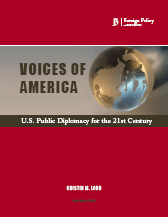Anyone interested in the intersection of public diplomacy and “web 2.0” has probably heard about the State Department’s Deputy Assistant Secretary Colleen Graffy’s use of Twitter (a popular social networking and micro-blogging service). During a recent trip to Europe, Graffy Twittered her journey through several countries, mixing personal and professional “tweets”. Some of her more personal comments, as well as her general tone, met with criticism by several reporters and commentators.
I have a few points of my own which I will make in a following post, but I thought a summary of the timeline and major critiques might be useful.
Graffy started Twittering in November, focusing mostly on her overseas travel, which included stops all across Europe. She touched on a number of the meetings and events she was attending on her trip, including meetings with school groups, government officials and others. She got an initial boost of attention when DipNote, the State Department’s official public affairs blog, highlighted her trip and Twitter feed.
 As most of the recent reports have argued, the United States government needs a coordinated public diplomacy plan that includes all agencies who are participating in this type of engagement. This is clear for a variety of reasons and pretty much universally accepted.
As most of the recent reports have argued, the United States government needs a coordinated public diplomacy plan that includes all agencies who are participating in this type of engagement. This is clear for a variety of reasons and pretty much universally accepted.